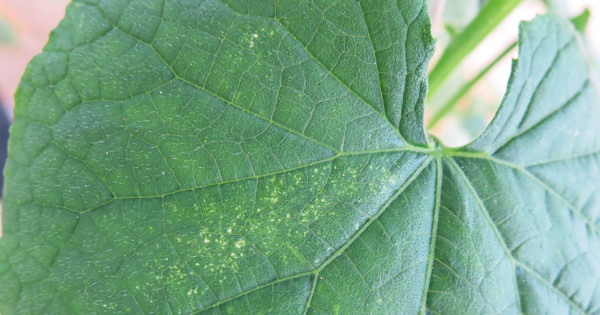To get two-spotted mite control off to the best start, it is important to begin scouting and monitoring as soon as possible, says Pascal Briand, IPM and pollination specialist at Biobest.
“The overall success of the biological control strategy is directly linked to the quality of monitoring,” he says. “Early detection is key. It necessitates paying close attention to spot the first signs of its presence.”
A resourceful pest, spider mites hibernate (diapause) and survive from crop to crop overwintering on, or behind, heating pipes and in the frame of the glasshouse. As days lengthen and temperatures rise, spider mites become more active.

“The pest often appears first on plants at the edge of the crop, particularly those close to posts,” explains Pascal. “Plants along the edges of corridors and near the entrance are also more susceptible to spider mite, due to increased contact with people and materials.
“Unlike flying pests, spider mite cannot be reliably monitored using sticky traps. To detect symptoms, close crop inspection involving the whole plant, is essential. The pest generally appears first in hotspots − in warmer and dryer parts of the glasshouse. It tends to attack the underside of younger leaves, at the top of the plant, causing them to take on a mottled appearance.
Multi-pronged approach
In cucumber crops where two-spotted mite is a particular challenge, Biobest recommends a multi-pronged preventative approach to optimise control.
“Firstly, a strong swirskii population − fed with Nutrimite – is introduced to lie in wait and feed on the first spider mites in the crop,” explains Pascal. “Where the first hotspots normally occur, we recommend making a single introduction of our Californicus-Breeding-System or Andersoni-Breeding-System (both administered in sachets) depending on climate conditions and season. These two predators can survive at low spider mite density.”
With regular routine monitoring, as soon as pest hotspots are identified Biobest recommends releasing the Phytoseiulus-System onto effected, and surrounding, plants. Sprinkling a small amount on to infested leaves, and those above and below, helps prevent the pest spreading. This should be repeated weekly, over 2-3 consecutive weeks, to help establish a good population.
Phytoseiulus is the most efficient high-density spider mite predator but it is wingless and therefore less mobile than some beneficials. Biobest therefore recommends combining it with the highly mobile Feltiella-System. Winged-Feltiella adults, with good searching ability, can locate spider mite hotspots throughout the crop.
“So summing up – to achieve successful control of this potential damaging pest, we recommend using a multi-pronged approach,” says Pascal. “While early detection is key, a preventative strategy is strongly recommended where spider mite is proving particularly challenging.”
 Biobest Belgium NV
Biobest Belgium NV